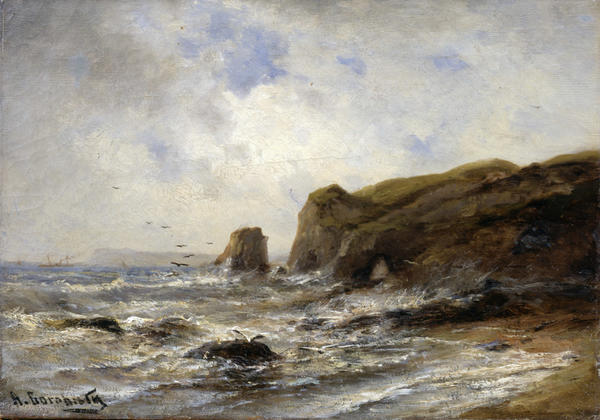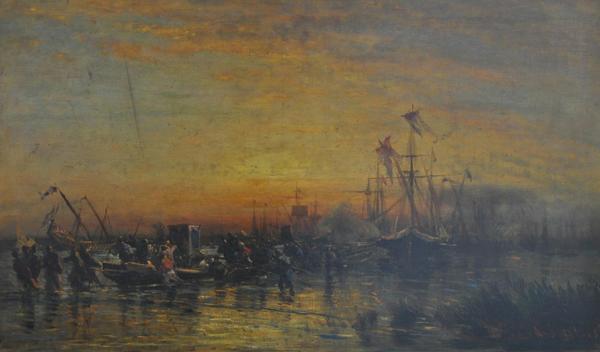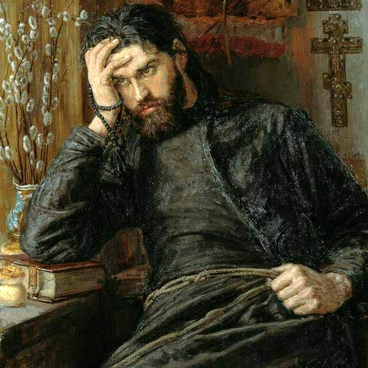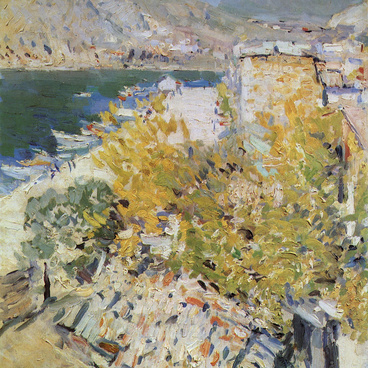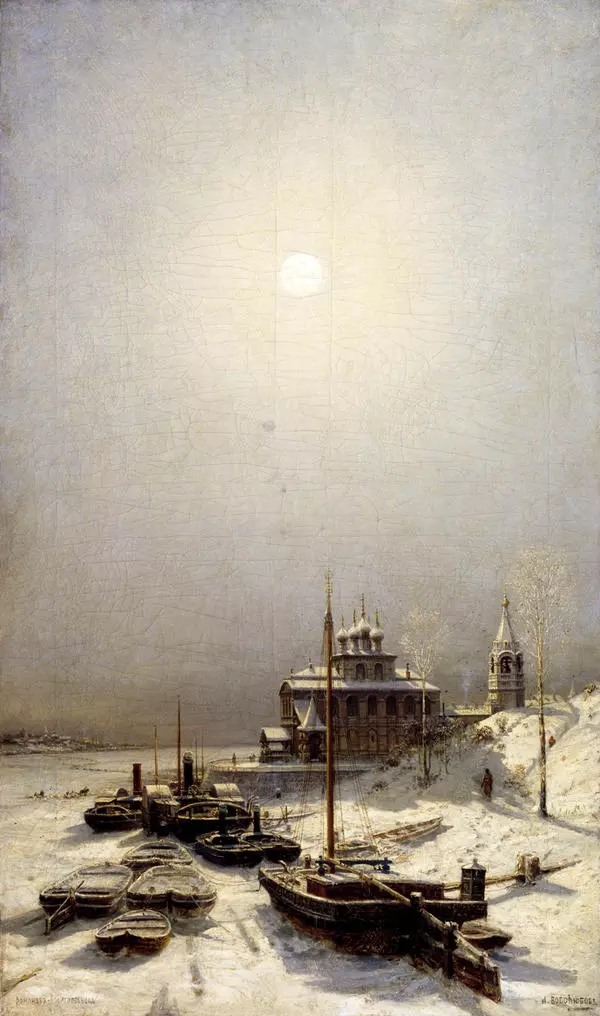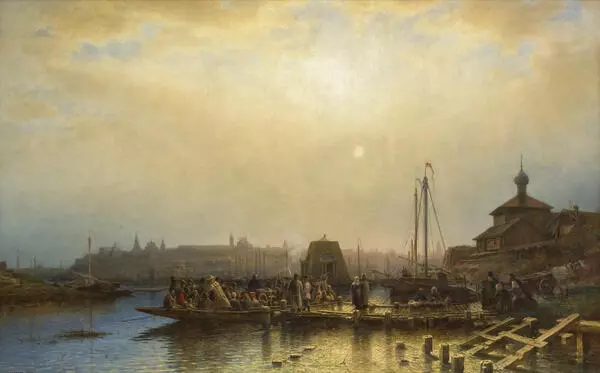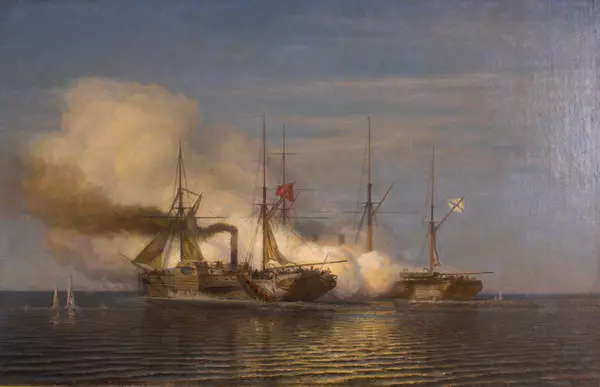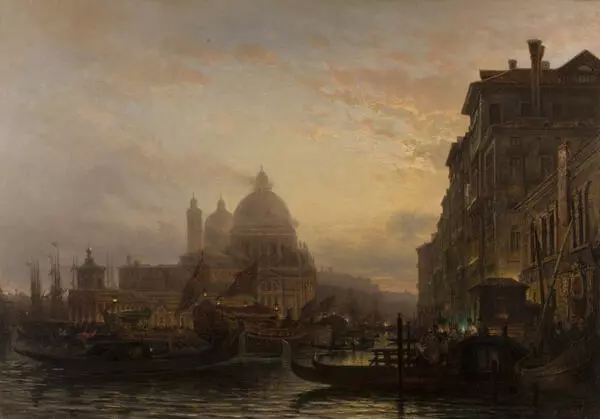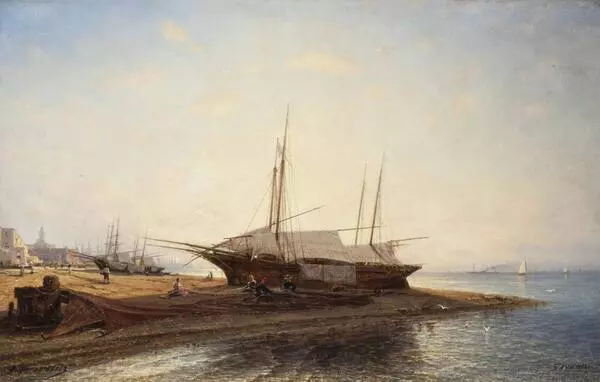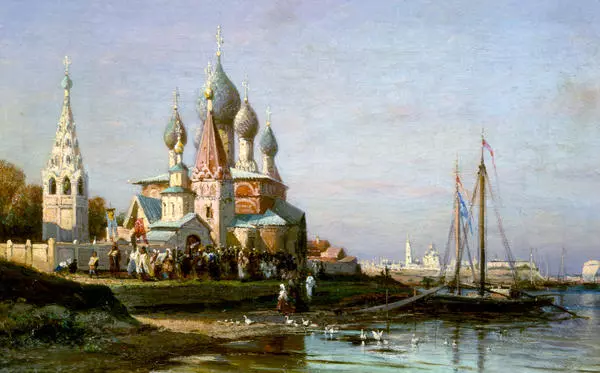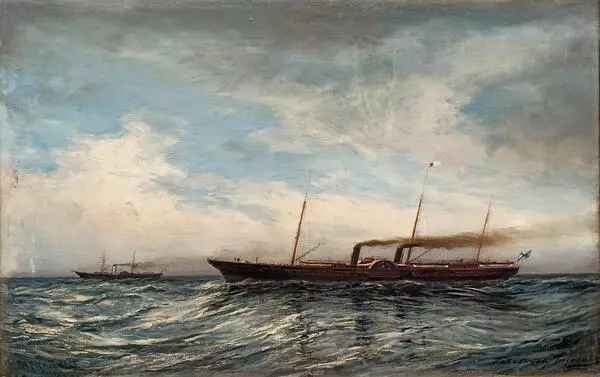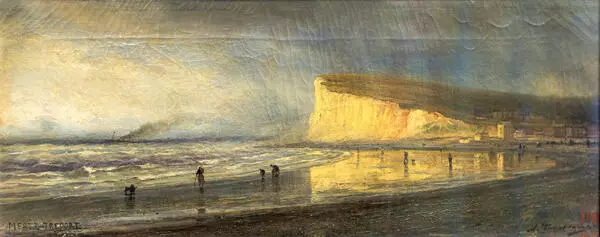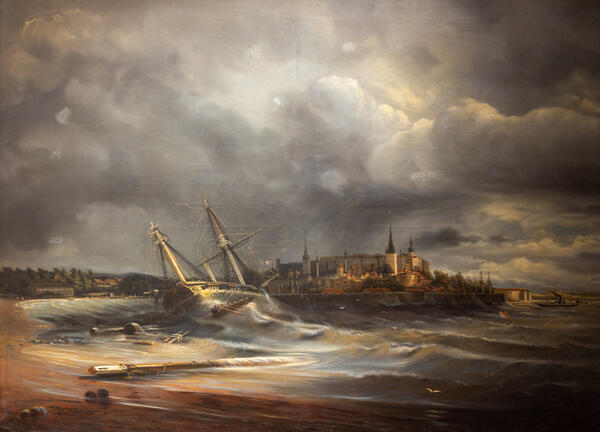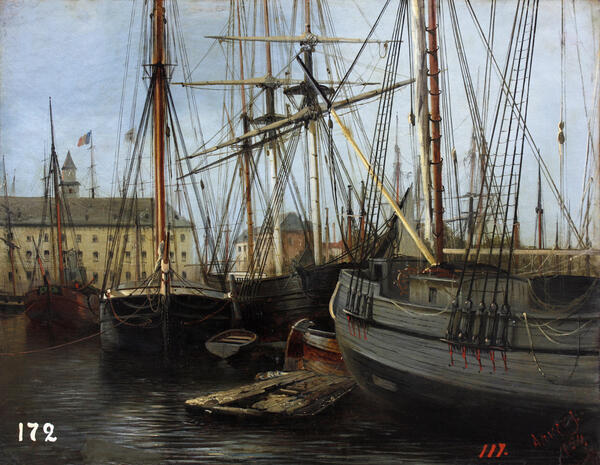Alexei Petrovich Bogolyubov (1824–1896), midshipman of the Imperial Navy, entered the Imperial Academy of Arts in 1850 as a volunteer student. He graduated in 1863 with a large gold medal, receiving a certificate of 1st degree for the title of class artist and at the same time resigned from the service and received an appointment as the marine painter of the Main Naval Headquarters of the Imperial Fleet. However, there are not only views of battles, seascapes and ships in his rich heritage.
#3
Alexei Bogolyubov
The Monastery
#5
#6
Alexei Petrovich Bogolyubov (1824–1896). Launch. 1870s. Duplicated canvas, oil. Penza Regional Picture Gallery named after K.A. Savitsky
In the early 1860s, Alexei Petrovich Bogolyubov and his brother received an invitation from B.A. Glazenap, an old acquaintance of the artist and the director of the Volga Shipping Company ‘Samolet’ (‘Aeroplane’). The idea was to go sailing along the Volga to compile a guide to the Volga River Route, in order to ‘give the traveler as clear and true concept as possible about all the wonderful Volga regions’.
#9
Nikolai Petrovich Bogolyubov (1821–1898) took up the literary and descriptive part, and Alexei Petrovich took up the artwork of the surrounding landscapes.
In the aftermath of this trip, Alexei Bogolyubov took a series of drawings and sketches with views of the ancient Volga cities, which were included as illustrations (in the form of lithographs and polytypes) in the guide ‘Volga from Tver to Astrakhan’, published in 1862.
In the aftermath of this trip, Alexei Bogolyubov took a series of drawings and sketches with views of the ancient Volga cities, which were included as illustrations (in the form of lithographs and polytypes) in the guide ‘Volga from Tver to Astrakhan’, published in 1862.
#8
Alexei Petrovich Bogolyubov (1824–1896). Royal trip along the Volga. 1860s. Oil on canvas. Penza Regional Picture Gallery named after K.A. Savitsky
#4
The great river impressed the artist with immense breadth and beauty. In his notes, he remembered the following: ‘Sailing in endless sheer cliffs through the Zhiguli Mountains, I thought - what is the Rhine, the Danube with its Iron Gates and, finally, Saxon Switzerland! What a trifle it is and how much sort of beauty stands on the Volga shores and no one bawls about it. The time comes and they will recognize us! … "
The most famous painting from the Volga series, created in 1861, is ‘Ipatievsky Monastery near Kostroma’. It is located in the halls of the State Tretyakov Gallery. The small sketch ‘Monastery’ in the Penza Art Gallery presents the viewer a white-stone and golden-topped Rus, comfortably flooded with autumn sunlight on the banks of Mother Volga. A tender and soft picture with small boats on the overgrown shore, residents walking along the embankment, yellowing leaves of trees and the outlines of a large monastery fills the viewer’s heart with peace and grace, calmness and light.
The most famous painting from the Volga series, created in 1861, is ‘Ipatievsky Monastery near Kostroma’. It is located in the halls of the State Tretyakov Gallery. The small sketch ‘Monastery’ in the Penza Art Gallery presents the viewer a white-stone and golden-topped Rus, comfortably flooded with autumn sunlight on the banks of Mother Volga. A tender and soft picture with small boats on the overgrown shore, residents walking along the embankment, yellowing leaves of trees and the outlines of a large monastery fills the viewer’s heart with peace and grace, calmness and light.
#10
Penza Regional Picture Gallery named after K.A. Savitsky
читать дальшескрыть
00:00
00:00
1x
The Monastery
Время создания
1860s
Размер
33x46 cm
33×46 см
33×46 см
Техника
oil on canvas
5
Открыть в приложении
Поделиться


